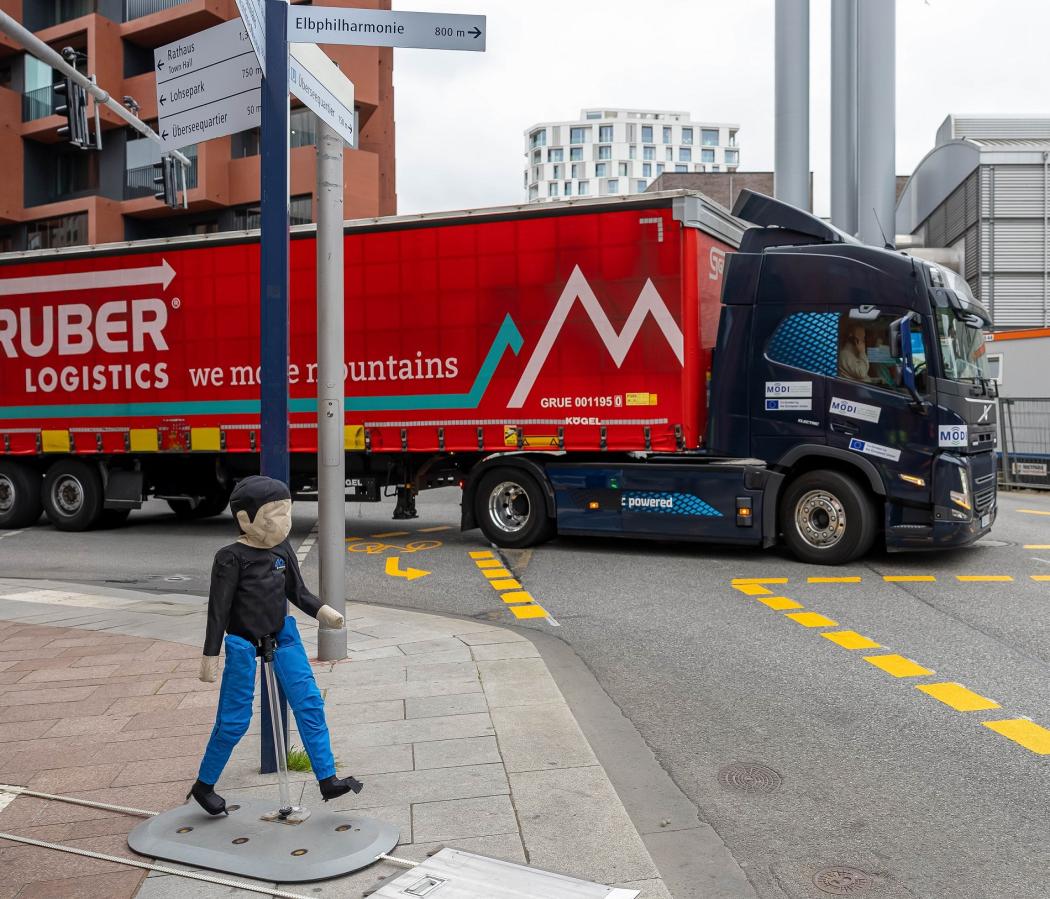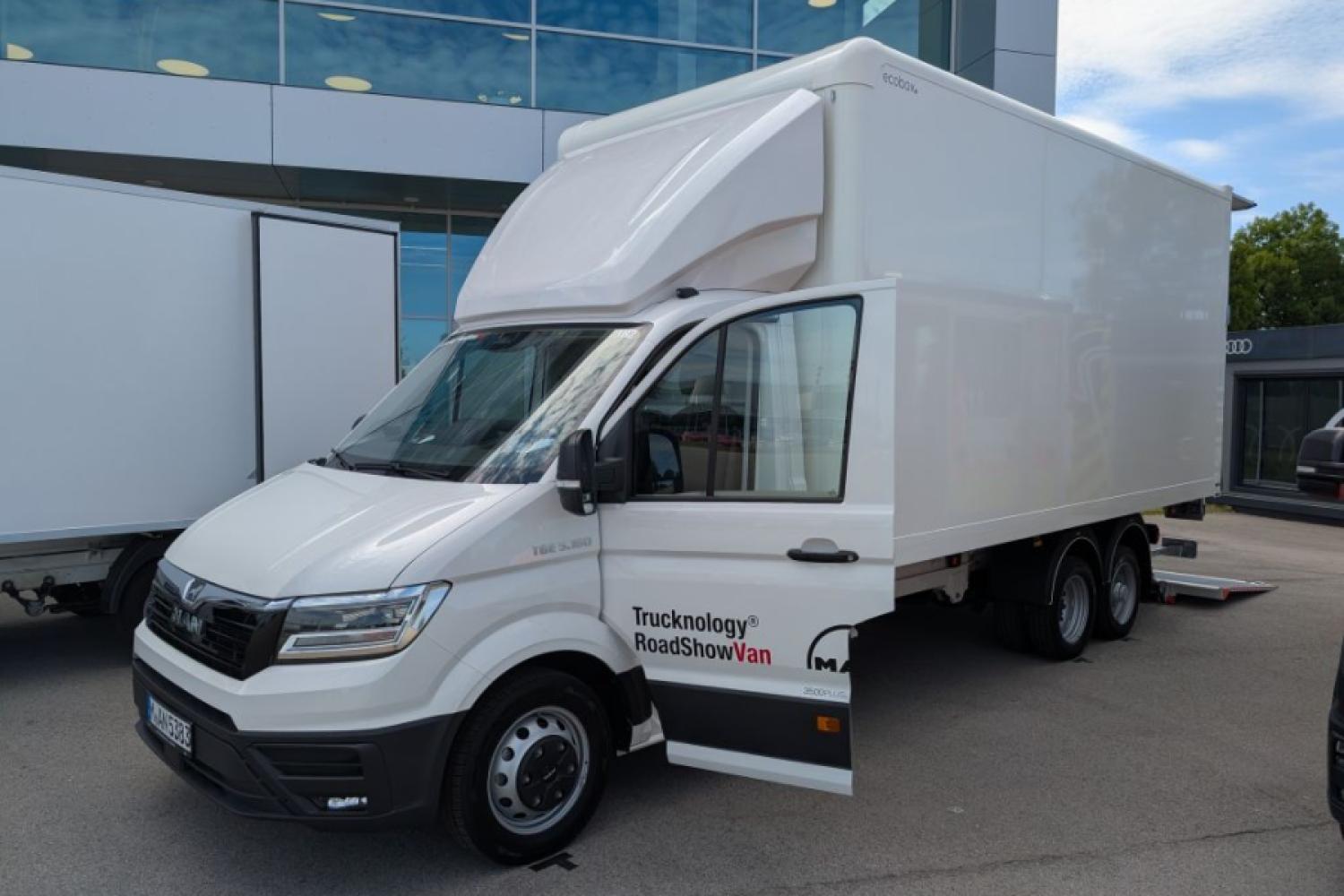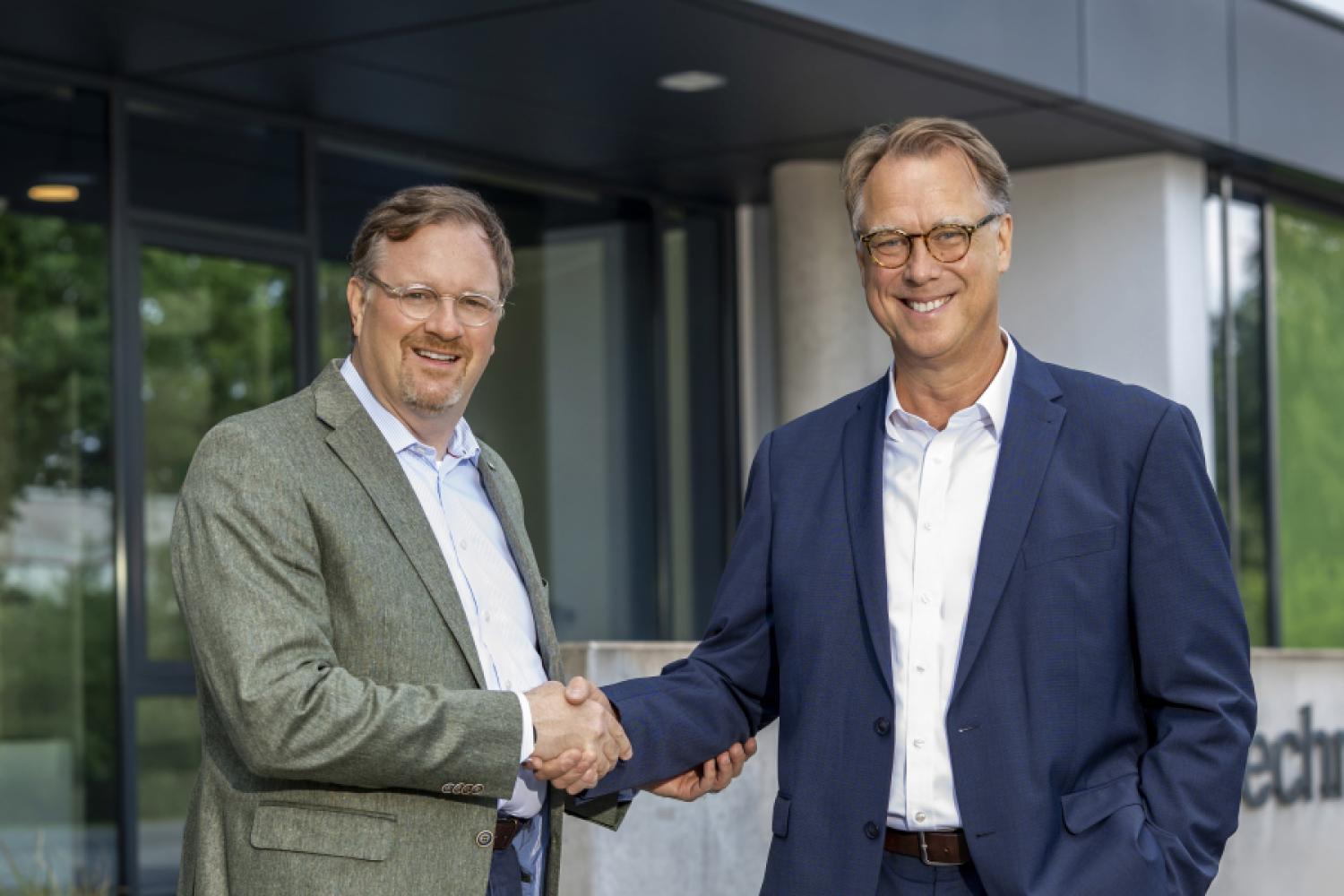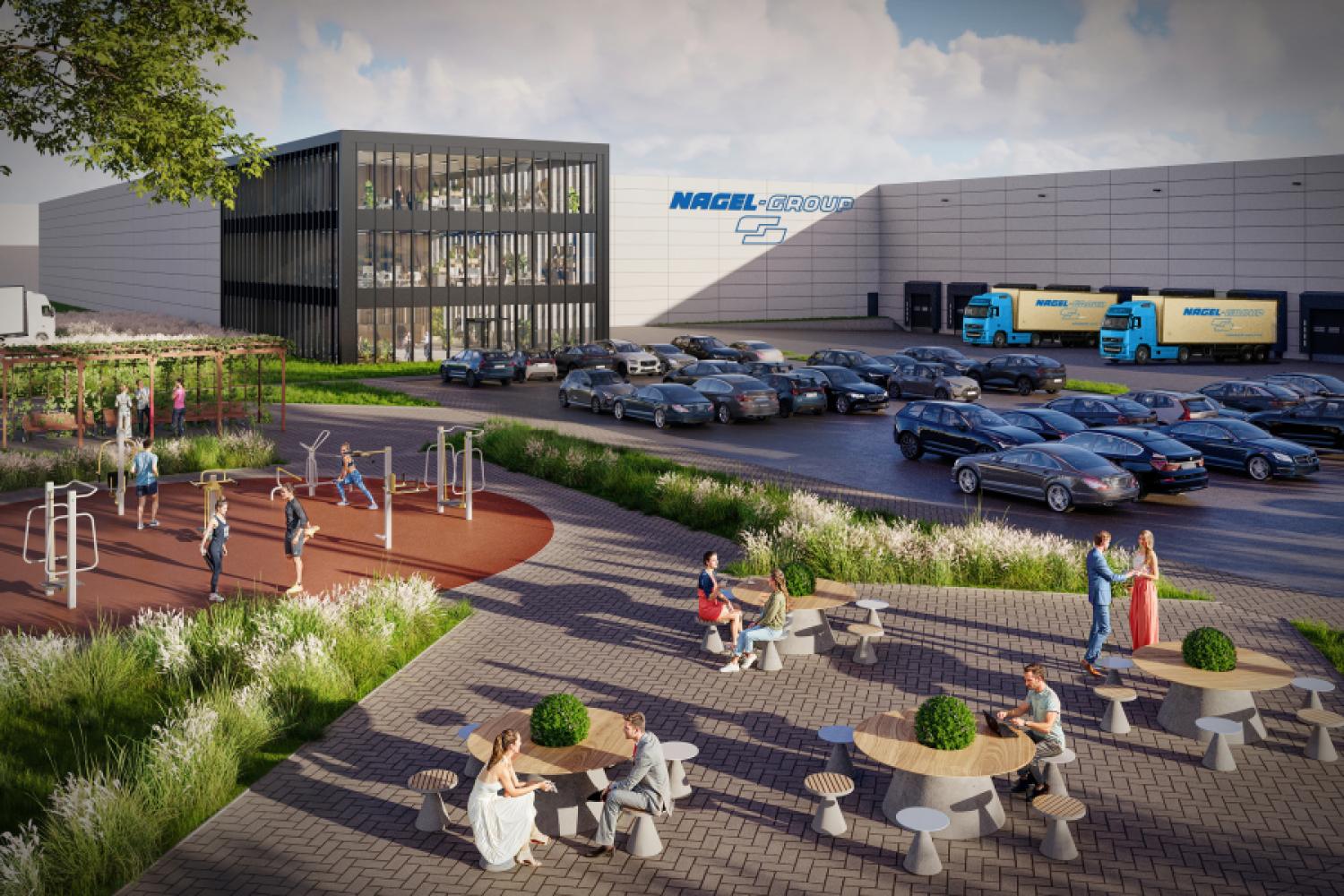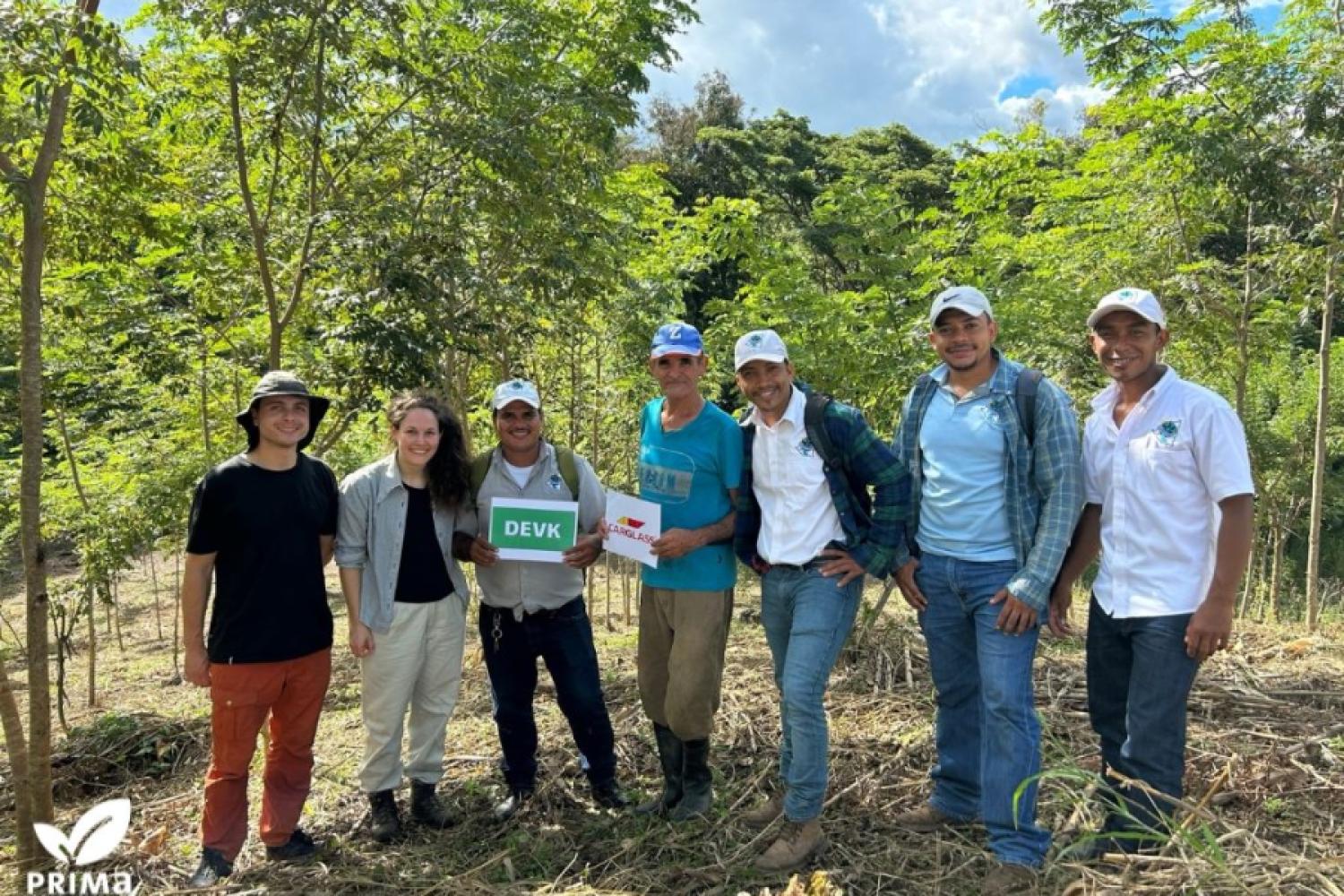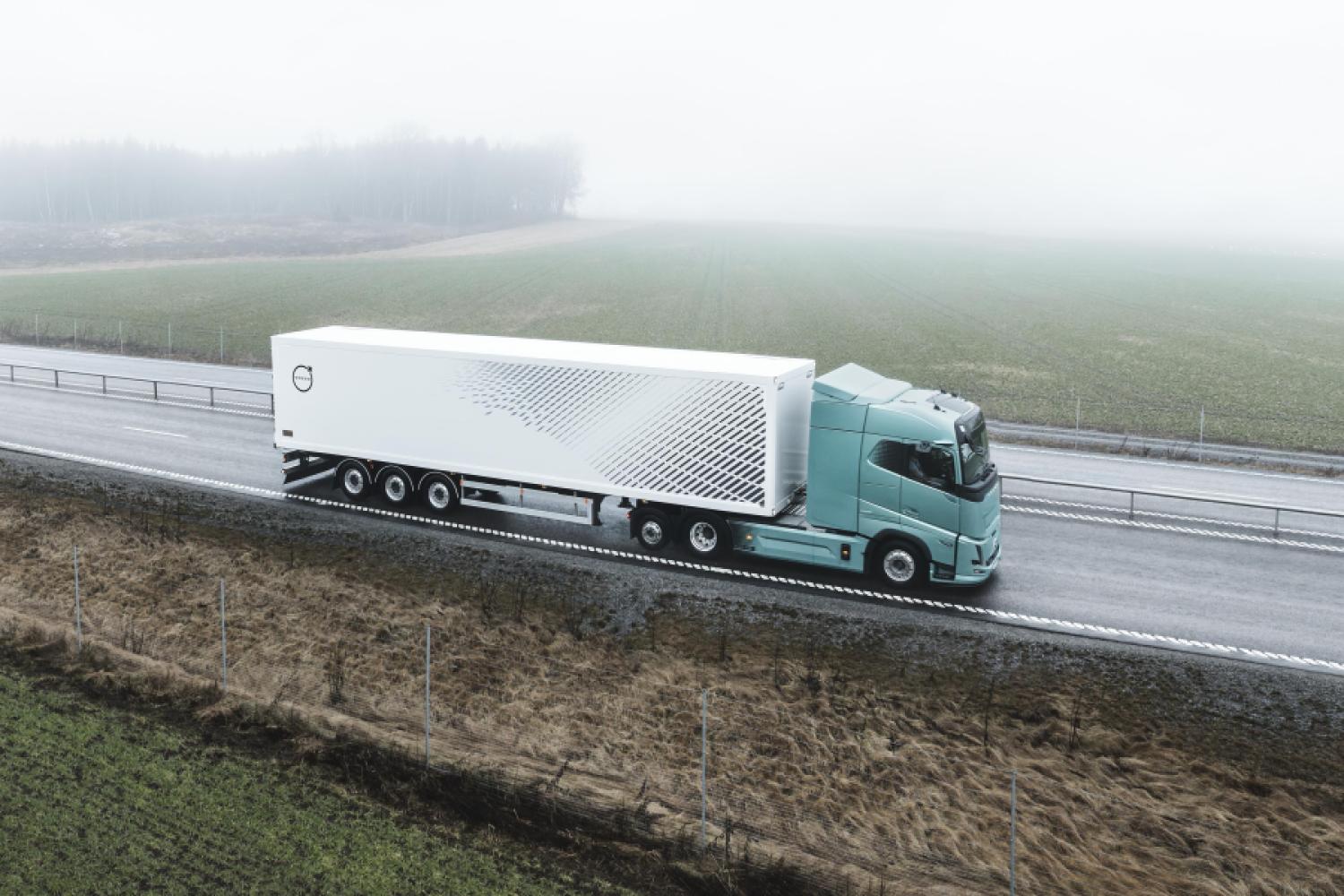The European mobility project MODI successfully tested two crucial application scenarios for automated driving in the real road environment of Hamburg in May 2025. The focus was on the safe integration of trucks into the flowing motorway traffic and the detection of vulnerable road users in urban areas. The tests were conducted by Gruber Logistics, DAF Trucks, Volvo Trucks, the Federal Highway Research Institute (BASt), and other partners in close collaboration with the Free and Hanseatic City of Hamburg.
“The increasingly critical shortage of drivers is forcing the industry to rethink. We need to deploy these skilled workers in the future where their experience is strategically necessary – the technology already exists for simple, monotonous tasks. The automated driving functions and infrastructure
technology not only increase safety for our drivers but for all road users, including pedestrians,” explains Martin Gruber, CEO of Gruber Logistics, from the perspective of the logistics project partner.
Autonomous Merging of Trucks on the Motorway
On the motorway, the project partners tested a cooperative merging of trucks into existing lanes. The "Cooperative Merging" technology developed by Volvo was used, where vehicles exchange information about construction sites and obstacles in real time and coordinate their driving maneuvers accordingly. The test demonstrated how automated trucks could integrate safely and efficiently into complex traffic situations.
Cooperation with Intelligent Infrastructure
In the urban environment, the collaboration of vehicles with so-called "intelligent infrastructure" was tested. At a central traffic hub in Hamburg, a novel detection
system was used to identify weaker road users such as pedestrians and cyclists up to 300 meters away.
The system analyzes movement patterns and transmits relevant data in real-time to approaching trucks, which themselves have a limited detection range. To realistically simulate critical situations, child crash test dummies were also used to specifically test blind spots.
Integration of Traffic Light Data
Additionally, the project partners tested the integration of cooperative traffic light data. Through so-called "Time-to-Green" information, the trucks could dynamically adjust their speed to pass through traffic light phases without stopping when possible. At the same time, the urban traffic control responded flexibly to the expected traffic flow. The aim was to improve traffic flow, minimize braking maneuvers, and measurably reduce
fuel consumption and emissions.
Background: MODI
MODI is a European innovation initiative with 34 partners from eight countries and a total budget of around 28 million euros. The goal is to test connected, cooperative, and automated mobility solutions (Connected, Cooperative and Automated Mobility – CCAM) along an international traffic corridor and overcome barriers to the market launch of automated logistics systems.
The focus is on integrating automated vehicles into real logistics processes, traffic safety, efficient infrastructure use, and environmental compatibility.
MODI also recently presented itself at the ITS European Congress 2025 in Seville. There, the project partners discussed cross-border challenges, digital infrastructure, and initial results from the test environments. MODI consistently pursues the goal of advancing automated freight transport across Europe in
